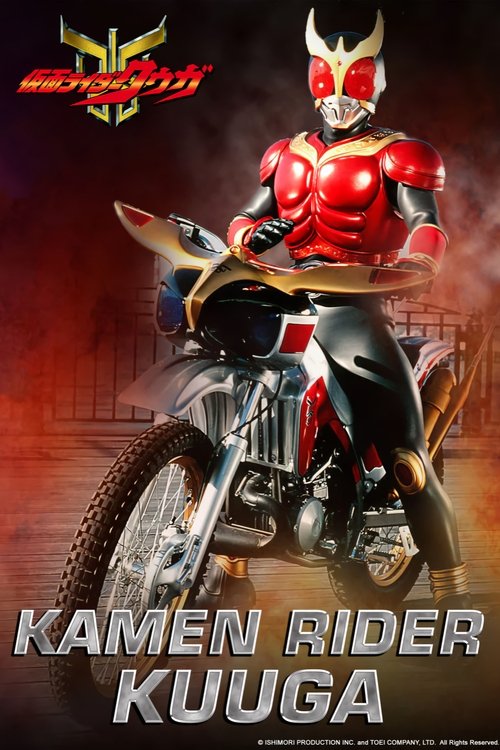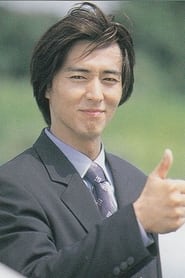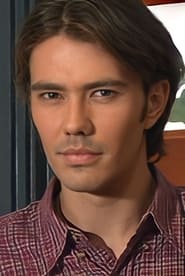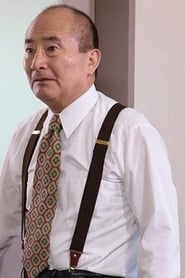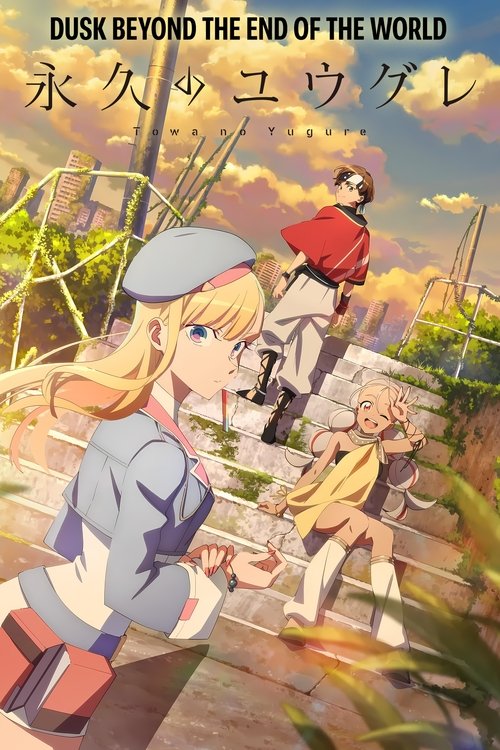
Ask Your Own Question
What is the plot?
In the year 2000, a series of mysterious murders occur in Japan, linked to a group of monstrous beings known as the Grongi. The story begins with a young man named Yusuke Godai, who is searching for purpose in his life. One day, while exploring an ancient archaeological site, he discovers a mysterious artifact known as the "Kuuga Belt." This belt is connected to the ancient warrior Kuuga, who fought against the Grongi in the past.
As Yusuke examines the belt, he inadvertently activates it, transforming into Kamen Rider Kuuga. This transformation grants him incredible powers, including enhanced strength, speed, and agility. However, he is initially overwhelmed by the changes and struggles to control his new abilities. His first encounter as Kuuga occurs when he faces a Grongi monster, the "Mikur," who is attacking a group of people. Yusuke, driven by a desire to protect others, engages in a fierce battle. He uses his newfound powers to defeat the Mikur, saving the victims and realizing the responsibility that comes with his transformation.
Following this initial victory, Yusuke is approached by the police, particularly a detective named Kaoru Ichijo, who is investigating the Grongi murders. Ichijo is skeptical of Yusuke's abilities but recognizes that he may be the key to stopping the Grongi. Yusuke, motivated by a sense of justice and the desire to help, agrees to work with Ichijo and the police. They begin to gather information about the Grongi and their patterns of attack.
As the story progresses, Yusuke faces various Grongi monsters, each with unique abilities and forms. He learns to harness the powers of the Kuuga Belt, which allows him to change forms based on the situation. For instance, he transforms into "Mighty Form" for strength, "Dragon Form" for agility, and "Titan Form" for defense. Each transformation is accompanied by a visual spectacle, showcasing the belt's power and Yusuke's determination.
Yusuke's battles with the Grongi become increasingly intense, leading to confrontations with more powerful monsters, such as the "Garu" and "Kagami." During these encounters, Yusuke's internal struggle is highlighted; he grapples with the fear of becoming a monster himself, as the Grongi are former humans who have succumbed to their darker instincts. This fear is compounded by the fact that the Grongi are drawn to Yusuke, sensing his power and potential for darkness.
In a pivotal moment, Yusuke faces a Grongi named "Garu," who has a personal vendetta against him. The battle is brutal, with Garu taunting Yusuke about his fears. Yusuke, fueled by his desire to protect others, pushes through his doubts and ultimately defeats Garu, but not without sustaining serious injuries. This victory solidifies his resolve to continue fighting, despite the toll it takes on him physically and emotionally.
As the series progresses, the Grongi's motivations are revealed to be tied to an ancient prophecy, which states that they must hunt and kill humans to fulfill their purpose. Yusuke learns that the Grongi are not merely mindless monsters; they are driven by a primal instinct to hunt. This revelation deepens the conflict, as Yusuke must confront the nature of his enemies and the potential for violence within himself.
The climax of the series occurs when Yusuke faces the Grongi leader, "Kagami," who possesses immense power and a deep understanding of the Kuuga Belt. Their battle is a culmination of Yusuke's journey, as he must confront not only Kagami but also his own fears and doubts. The fight is intense, with both combatants pushing their limits. Yusuke ultimately taps into the full potential of the Kuuga Belt, achieving a new form that allows him to overcome Kagami.
In the aftermath of the battle, Yusuke reflects on his journey and the lives he has saved. He understands that being Kuuga is not just about fighting monsters but also about protecting humanity and embracing his role as a hero. The series concludes with Yusuke continuing his mission to safeguard the world from the remnants of the Grongi threat, embodying the spirit of Kuuga as a symbol of hope and resilience.
What is the ending?
In the ending of Kamen Rider Kuuga, Yusuke Godai, the protagonist, faces off against the final Grongi, the powerful creature known as the "Demon." After a fierce battle, Yusuke ultimately defeats the Demon, bringing peace to the city. However, the victory comes at a cost, as Yusuke must confront the reality of his powers and the burden they carry. The series concludes with Yusuke choosing to continue his journey as a protector, embodying hope and resilience.
As the final episodes of Kamen Rider Kuuga unfold, the tension escalates in a city plagued by the Grongi, a race of monstrous beings that have terrorized humanity. The air is thick with anticipation as Yusuke Godai, the determined and compassionate protagonist, prepares for the ultimate confrontation with the last of the Grongi, known as the Demon.
Scene 1: The Final Showdown The scene opens in a desolate urban landscape, the remnants of a once-bustling city now marred by destruction. Yusuke, clad in his iconic Kuuga armor, stands resolute, his heart pounding with a mix of fear and determination. The sky is overcast, casting a somber shadow over the battlefield. As the Demon emerges, its grotesque form towering over Yusuke, the atmosphere crackles with tension. Yusuke's internal struggle is palpable; he knows that this battle is not just for his life, but for the lives of countless innocents.
Scene 2: The Battle Intensifies The clash begins with a flurry of strikes, Yusuke utilizing his agility and combat skills to evade the Demon's powerful attacks. Each blow exchanged is a testament to Yusuke's resolve, his memories of the people he has fought to protect fueling his strength. The camera captures the raw emotion on his face--fear, anger, and an unwavering sense of duty. As the battle rages on, Yusuke taps into the full potential of his Kuuga powers, transforming into various forms to adapt to the Demon's relentless onslaught.
Scene 3: The Turning Point In a pivotal moment, Yusuke recalls the faces of those he has lost and those he has saved. This memory ignites a fierce determination within him. He channels this energy into a final, desperate attack. The scene slows, emphasizing the weight of the moment as Yusuke unleashes a powerful finishing move. The impact resonates through the air, and for a brief moment, time seems to stand still. The Demon lets out a deafening roar, its body convulsing before collapsing to the ground, defeated.
Scene 4: The Aftermath As the dust settles, Yusuke stands amidst the wreckage, breathing heavily, his body battered but victorious. The city, though scarred, begins to show signs of hope as people emerge from their hiding places, witnessing the end of the Grongi threat. Yusuke's expression shifts from triumph to contemplation; he understands that while the battle is won, the war within himself continues. He reflects on the burden of his powers and the responsibility that comes with them.
Scene 5: A New Beginning In the final moments of the series, Yusuke is seen walking through the streets, the sun breaking through the clouds, symbolizing a new dawn. He is approached by his friends and allies, who express their gratitude and relief. Yusuke smiles, but there is a hint of sadness in his eyes as he acknowledges the sacrifices made along the way. He resolves to continue his journey, not just as a Kamen Rider, but as a beacon of hope for those who need protection.
Scene 6: The Fate of the Characters The series concludes with a montage of the main characters: - Yusuke Godai, now more determined than ever, embraces his role as a protector, ready to face whatever challenges lie ahead. - Detective Kaoru Ichijo, who has supported Yusuke throughout his journey, stands by his side, embodying the strength of their friendship. - The remaining members of the G3 team, having witnessed the power of unity and courage, are inspired to continue their fight against evil.
As the screen fades to black, the message is clear: while darkness may always exist, the light of hope and the strength of the human spirit will always prevail.
Is there a post-credit scene?
Kamen Rider Kuuga does not have a traditional post-credit scene like many modern films or series. However, the final episode, Episode 49, features a significant closing moment that serves as a thematic conclusion to the series.
In this scene, after the climactic battle against the final enemy, the Grongi, and the resolution of the conflict, we see Yusuke Godai, the protagonist who transforms into Kamen Rider Kuuga, reflecting on his journey. The atmosphere is somber yet hopeful, as he stands in a serene environment, contemplating the lives he has touched and the battles he has fought.
As he gazes into the distance, the camera captures the beauty of the natural world around him, symbolizing rebirth and the continuation of life. This moment is filled with emotional weight, showcasing Yusuke's growth from a carefree individual to a responsible hero who has faced immense challenges.
The scene concludes with a sense of peace, as Yusuke smiles softly, embodying the spirit of hope and resilience that has been a central theme throughout the series. This final moment encapsulates the essence of Kamen Rider Kuuga, leaving viewers with a lingering sense of inspiration and closure.
What are the different forms of Kamen Rider Kuuga and how do they affect his abilities?
Kamen Rider Kuuga, the protagonist Yusuke Godai, can transform into several forms, each with unique abilities and characteristics. The primary forms are Kuuga Mighty Form, which is the base form with balanced strength and speed; Kuuga Dragon Form, which enhances agility and allows for powerful kicks; Kuuga Pegasus Form, which grants enhanced speed and aerial capabilities; and Kuuga Titan Form, which increases physical strength and durability. Each transformation is triggered by the use of the Kuuga belt and is visually distinct, showcasing different colors and armor designs that reflect their respective powers.
What is the significance of the Grongi and their connection to Kuuga?
The Grongi are the primary antagonists of Kamen Rider Kuuga, a race of ancient creatures that emerge to hunt humans for sport. They are connected to Kuuga through the ancient prophecy that foretells the return of a warrior who would fight against them. Each Grongi has a unique design and fighting style, often reflecting their animalistic nature. Their motivations are rooted in a desire for chaos and destruction, which creates a direct conflict with Yusuke Godai, who embodies the hope and strength of humanity.
How does Yusuke Godai's character develop throughout the series?
Yusuke Godai begins as a carefree and optimistic young man, but as he encounters the Grongi and witnesses the suffering they cause, he becomes more serious and determined. His journey is marked by moments of doubt and fear, especially as he grapples with the responsibilities of being Kuuga. He learns to balance his desire to protect others with the burden of his powers, ultimately growing into a symbol of hope and resilience for those around him. His relationships with other characters, such as the police officers and his friends, further shape his development as he learns the value of teamwork and sacrifice.
What role does the ancient artifact, the Kuuga belt, play in the story?
The Kuuga belt is a crucial artifact that allows Yusuke Godai to transform into Kamen Rider Kuuga. It is not just a tool for transformation; it is also tied to the ancient history of the Grongi and the prophecy surrounding Kuuga. The belt reacts to Yusuke's will and determination, allowing him to access different forms based on his emotional state and the challenges he faces. The belt's design is symbolic, featuring motifs that represent the struggle between good and evil, and it serves as a constant reminder of the legacy Yusuke carries as he battles the Grongi.
What is the relationship between Yusuke Godai and the police force, particularly with Officer Kaoru Ichijo?
Yusuke Godai's relationship with the police force, especially Officer Kaoru Ichijo, is complex and evolves throughout the series. Initially, there is a level of mistrust as the police are wary of Kuuga's powers and the potential for danger. However, as they witness Yusuke's commitment to protecting civilians and fighting the Grongi, they begin to see him as an ally. Ichijo, in particular, becomes a key supporter, often working alongside Yusuke to strategize against the Grongi. Their bond deepens as they share the burden of loss and the weight of their responsibilities, highlighting themes of trust, camaraderie, and the fight against evil.
Is this family friendly?
Kamen Rider Kuuga, produced in 2000, is generally considered family-friendly, but it does contain some elements that may be objectionable or upsetting for children or sensitive viewers. Here are some aspects to be aware of:
-
Violence and Gore: The show features battles between Kuuga and the Grongi, which can include intense fight scenes and some graphic depictions of injuries. While not excessively gory, there are moments that may be unsettling.
-
Death and Horror Elements: The Grongi are depicted as monstrous beings that commit acts of violence, including murder. The show explores themes of death and the consequences of violence, which may be distressing for younger viewers.
-
Dark Themes: The narrative delves into darker themes such as fear, loss, and the struggle between good and evil. Characters face significant emotional turmoil, which may resonate deeply with sensitive audiences.
-
Monstrous Appearances: The design of the Grongi and their transformations can be frightening, featuring grotesque and unsettling visuals that might scare younger children.
-
Emotional Struggles: Characters experience fear, despair, and trauma, particularly in relation to the loss of loved ones or the burden of responsibility, which may be heavy for some viewers to process.
While Kamen Rider Kuuga is crafted with a heroic narrative and ultimately conveys messages of hope and perseverance, these elements may require parental guidance for younger audiences.

